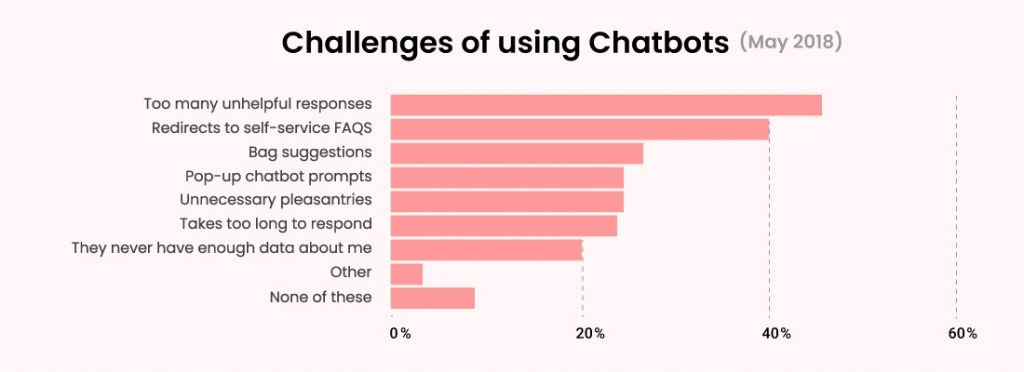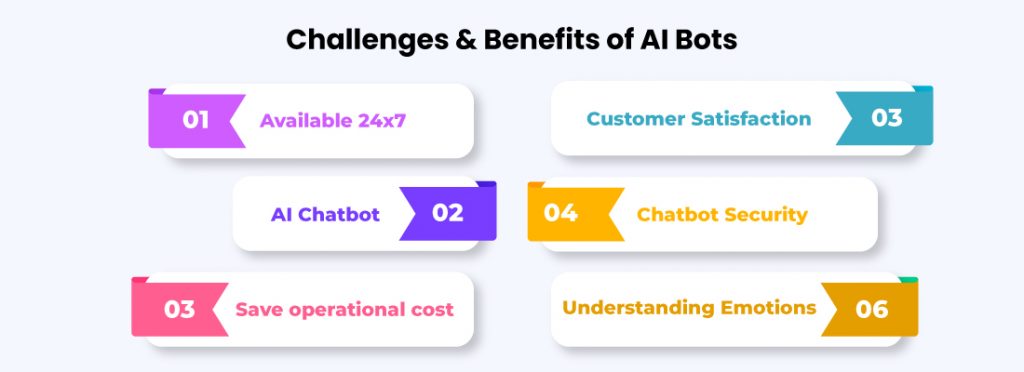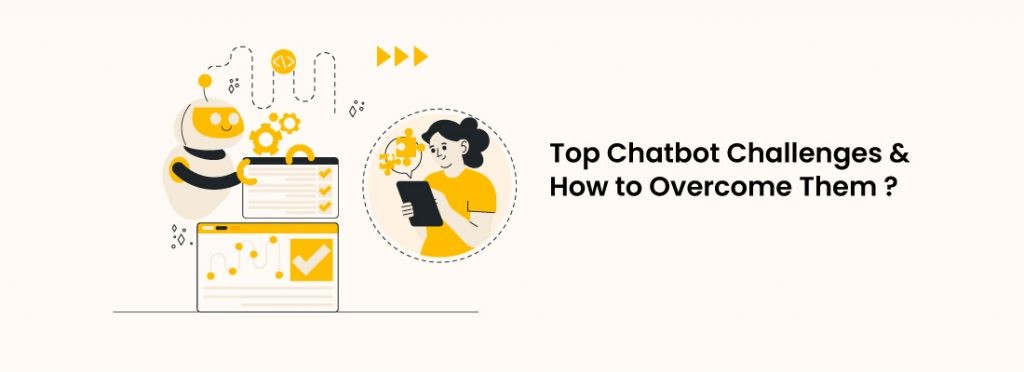Chatbots have grown in popularity over the past few years across a range of sectors, including customer service and healthcare.
But creating and implementing an effective chatbot is not without its difficulties.
Developers of chatbots frequently struggle with problems like user engagement, data shortages, and language limitations.
Overcoming these difficulties is essential if you want to develop a chatbot that will enhance user experience and company processes in general.
We’ll go over some of the biggest chatbot problems in this article, along with solutions.
Why are chatbots a great thing for small businesses?
Due to their capacity to enhance customer experience, boost productivity, and cut expenses, chatbots have grown in popularity in recent years.
Chatbots can be especially helpful for small businesses since they can offer 24/7 customer care without requiring a human agent to be on duty at all times.
Customers can thus expect prompt responses to their questions, which may boost their pleasure and loyalty.
Additionally, chatbots may respond to a lot of inquiries at once, which helps speed up response times and increase efficiency.
Chatbots can help to free up employee time and allow them to concentrate on more difficult duties, which can be especially beneficial for small organizations with limited resources.
Because they may be less expensive to run than a human customer service team, chatbots can also assist small firms cut back on customer support expenses.
For small enterprises with tight budgets, this may be especially crucial.
In general, chatbots can be a fantastic investment for small businesses because they can enhance customer service, boost productivity, and cut costs—all of which can help the company succeed and expand.
Read More: What are eCommerce Voicebot and their top use cases?

The Top 3 Chatbot Challenges.
The top 3 challenges with chatbots are:
Natural language processing (NLP) limitations:
Chatbots use NLP to comprehend and reply to client inquiries.
NLP technology, however, is not flawless and occasionally has trouble understanding the subtleties of human language.
Customers may end up misunderstood and frustrated as a result.
Lack of personalization:
While chatbots may answer many questions at once, they may find it difficult to give each consumer a unique experience.
As clients demand more individualized interactions from businesses, this might be difficult.
Maintenance and updates:Chatbot Challenges
To keep them operating effectively and responding to client inquiries truthfully, chatbots need regular upkeep and updates.
Small firms with few resources may find it difficult to handle this because maintaining a chatbot may be time-consuming and expensive.
Overall, while chatbots can be quite useful for organizations, several issues must be resolved to deliver excellent customer service.
Here are Some Ways How YugasaBot Overcomes the Challenges Associated with Chatbots:
Natural language processing (NLP) limitations:
Our bot has been appropriately educated using machine learning algorithms and successfully overcomes NLP restrictions.
As a result, Yugasabot’s response is always accurate and reliable.
To help prevent misunderstandings, we also include prewritten solutions to typical customer questions.
Lack of personalization:
We leverage client information to personalize each user’s experience by making our bot respond to them individually.
This can involve addressing the client by name, making suggestions for goods and services based on past purchases, and offering tailored advice.
Maintenance and updates:
We frequently check our chatbot’s performance and make any necessary adjustments to ensure that it is current and operating properly.
This can entail modifying the chatbot’s responses in response to user feedback, enhancing its linguistic ability, or including new features to increase its functionality.
In general, it’s critical to understand that chatbots require continual care and resources to make sure they’re satisfying client expectations and provide a top-notch experience.
Businesses can profit from Yugasabot in many ways, like better customer service, higher efficiency, and cost savings.

The value that a chatbot can bring to your company.
A chatbot can bring significant value to a company in the following ways:
● Improved customer service: Chatbots can offer round-the-clock customer service, making it possible for users to get assistance whenever they need it. This can increase user satisfaction and loyalty.
● Increased efficiency: Chatbots can manage a lot of inquiries at once, which helps speed up responses and increase productivity. Businesses with limited resources may find this to be of particular benefit.
● Cost savings: Compared to a human customer support team, chatbots may be less expensive to run, saving the business money. Additionally, chatbots can free up staff time so they can concentrate on more difficult jobs.
● Personalization: Chatbots may offer a more individualized experience for every customer by utilizing consumer data, which may boost engagement and conversion rates.
● Data collection and analysis: Chatbots may gather important customer information and offer perceptions on consumer behavior, which can aid companies in enhancing their goods and services.
Overall, chatbots can add tremendous value to a business by enhancing customer service, boosting productivity, cutting expenses, and offering insightful data about customer behavior.
Chatbots are set to become a more crucial tool for organizations of all kinds as technology develops.
Frequently Asked Questions
How are complex or confusing questions handled by chatbots?
By utilizing machine learning techniques to increase their capacity for comprehension and response to input in natural language, chatbots can tackle complex or ambiguous queries.
In situations where the chatbot is unable to respond satisfactorily, having backup options, such as sending the user to a human agent, can be useful.
How can user engagement in chatbots be increased?
User engagement can be increased by giving individualized and pertinent responses, establishing clear and user-friendly interfaces, and making the chatbot more interesting by using comedy or other conversational approaches.
Final thoughts
In conclusion, chatbots have the potential to be very useful tools for companies of all sizes.
They can offer round-the-clock customer service, boost productivity, cut expenses, and offer insightful data on consumer behavior.
The limits of natural language processing and the lack of personalization that come with chatbots can be solved with the right training, the utilization of consumer data, and frequent upkeep and upgrades.







